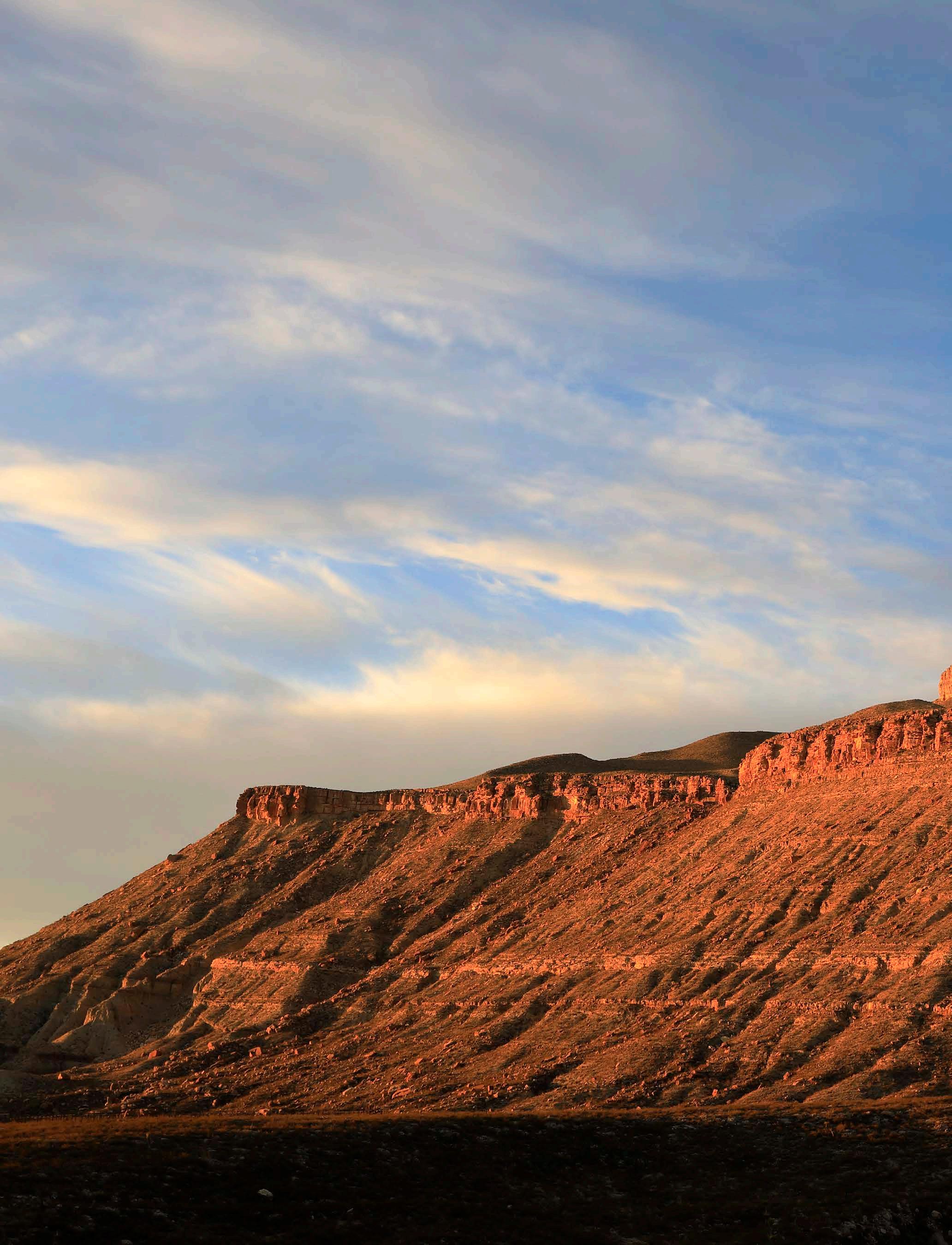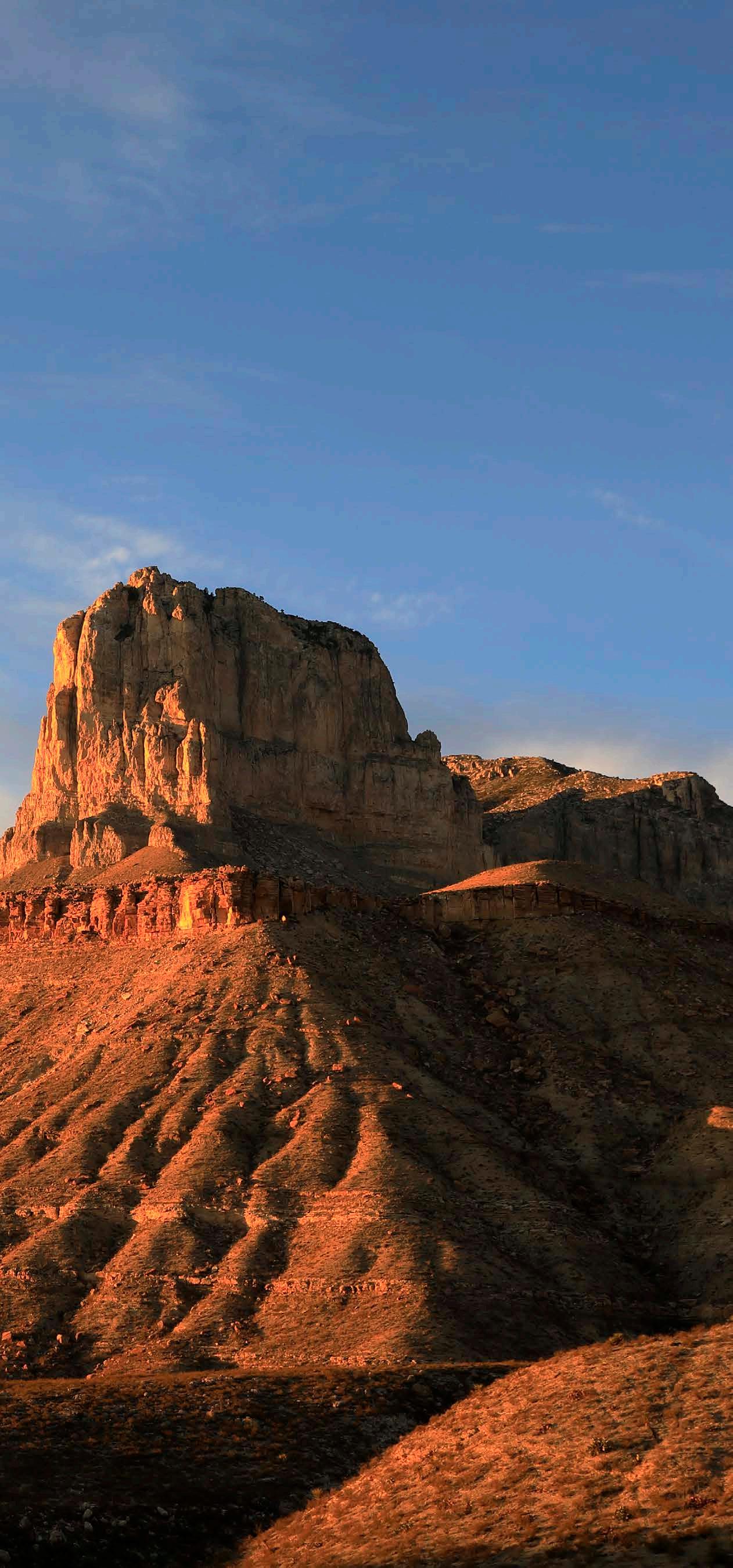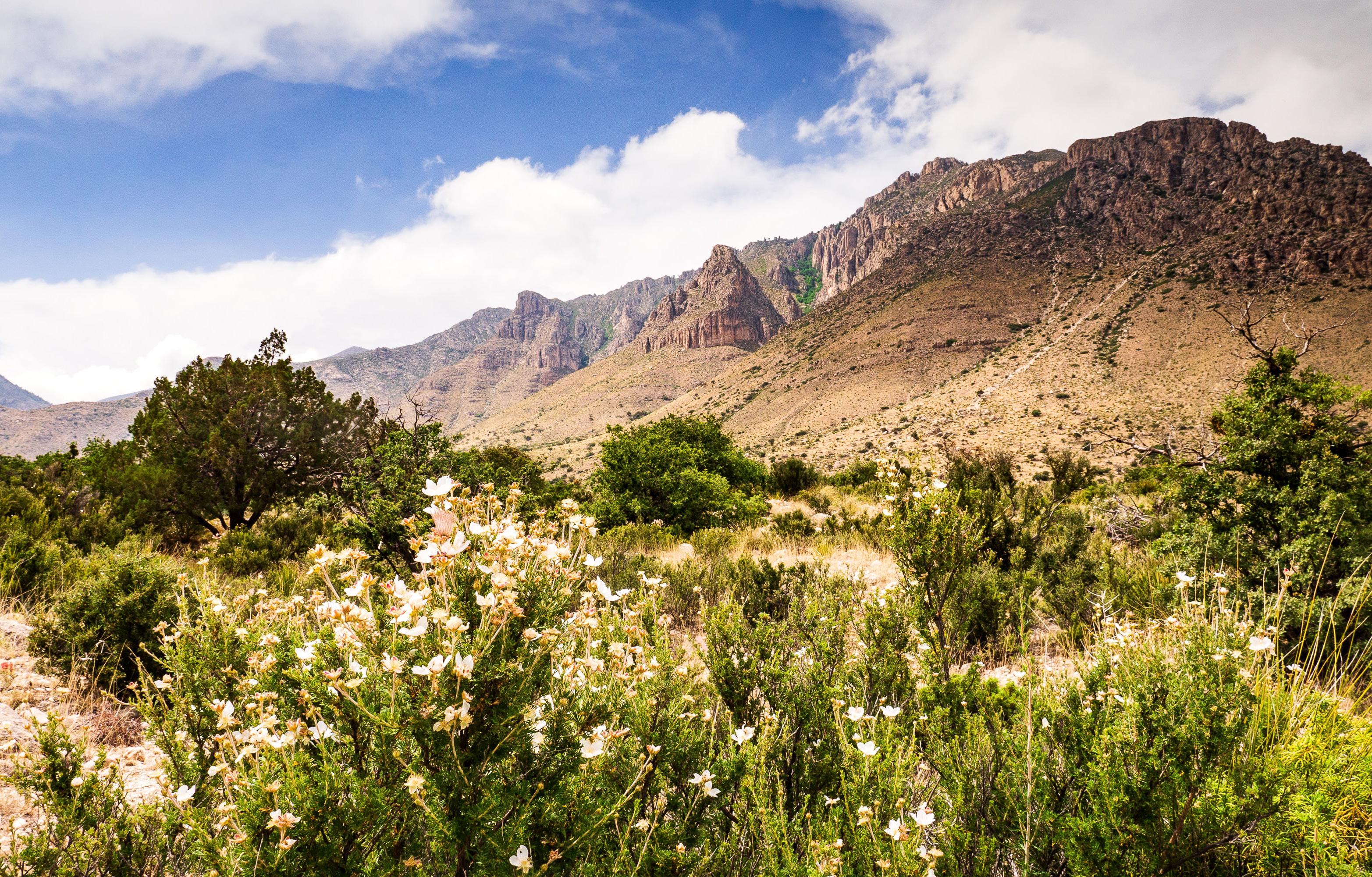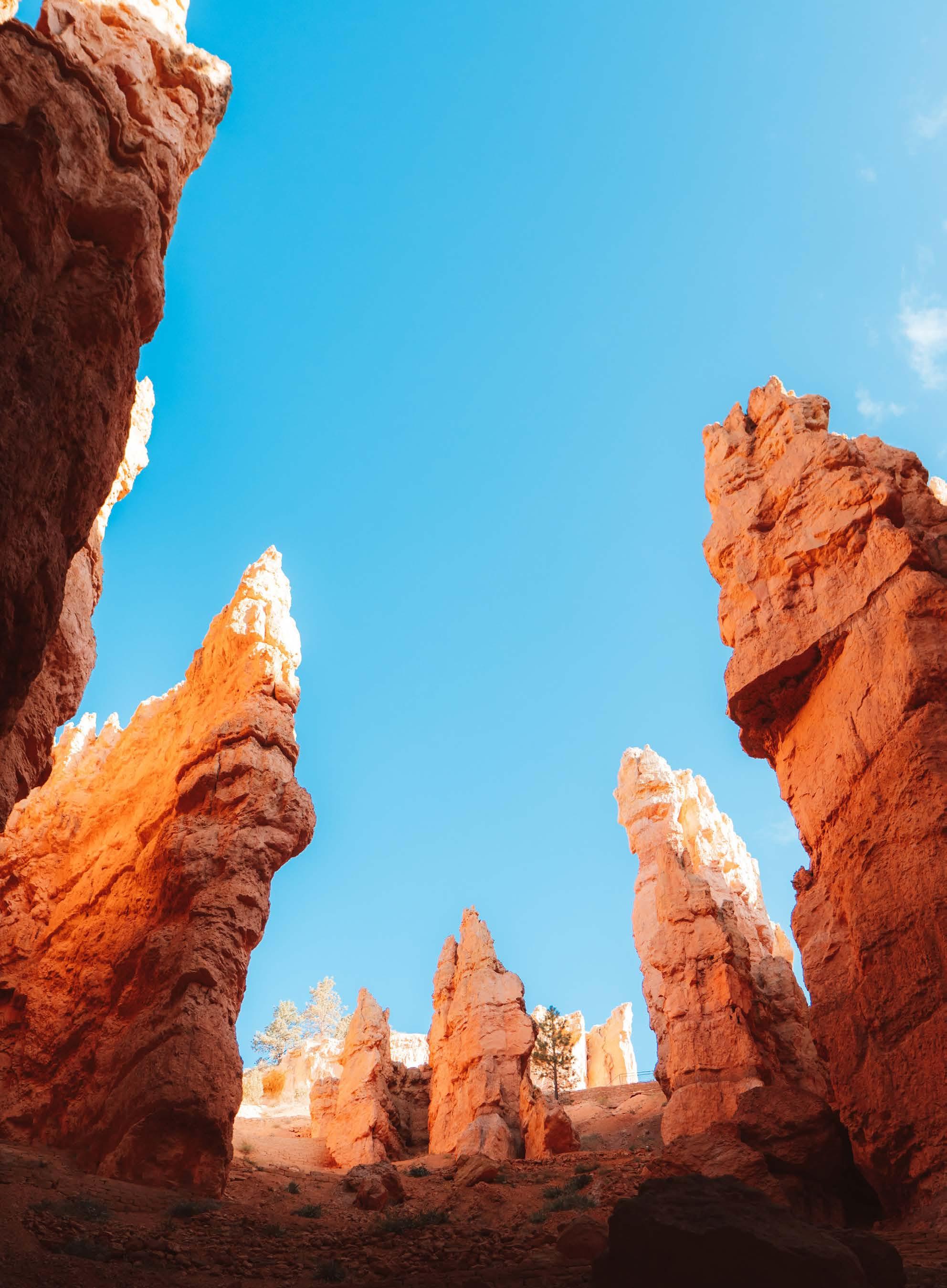
2 minute read
Guadalupe Mountains National Park
Set in the boundless Chihuahuan Desert in western Texas, Guadalupe Mountains National Park is recognized for its shockingly white Salt Basin Dunes, wildlife-populated grassland and the world’s most extensive Permian fossil reef. With a history shaped through conflict, cooperation and survival, it is home to Guadalupe Peak, Bush Mountain, Shumard Peak and Bartlett Peak, the four highest points in Texas. Its 80 miles of trails wind from woodland canyons to lush springs, deserts, dunes and fossilized mountains.
The largest wilderness area in the state of Texas, the Guadalupe Mountains has experienced a constant stream of human history for over 10,000 years. From conflicts between Mescalero Apache and Buffalo Soldiers, stagecoach service operating the Butterfield Overland Mail, the arrival of ranchers and settlers, and, ultimately, its designation as a national park, you can learn about its past at Frijole and Williams Ranches, as well as the ruins at Pinery Station.
The Flora And Fauna
Among the country’s best-kept secrets, Guadalupe Mountains National Park is one of Earth’s best examples of an ancient, marine fossil reef. Offering outstanding biological diversity, thanks to big geographical variations within the extraordinarily rugged landscape, it features sheer canyon walls, ridge tops in the high-country ridge tops, vast desert lowland and verdant riparian oases.
Given the harsh conditions, it’s tough, adaptive plant life that thrives here, including thick-fleshed cacti, monsoon season wildflowers, ferns that sprout from moisture-retaining crevices and barbed agaves.
The park features diverse life zones, spanning a Chihuahuan Desert community; lush, streamside maple and oak-dotted woodlands; canyons; and forested mountaintops fragrant with ponderosa pine and Douglas fir. Keep an eye out for western diamondback rattlesnakes, bull snakes and coachwhip snakes. Come fall, tarantulas can be spotted seeking mates. By contrast, mountain elevations are home to elk, black bears, mountain lions, gray foxes, mule deer and so much more.

The Weather
Ranging in elevation from 3,000 to more than 8,000 feet, Guadalupe Mountains National Park sees significantly variable weather. Spring and summer are generally warm and mild. By contrast, fall and winter are cooler and often experience high winds that can exceed 70 miles per hour.

Check the current weather to ensure you pack the appropriate gear and check the park webcams to see live conditions.
THE HIKES, DRIVES AND VIEWPOINTS
Guadalupe Peak Texas
HIGH POINT TRAIL
A hard, 8.4-mile hike, the Guadalupe Peak Texas High Point Trail sees a 3,000-foot elevation gain that brings you to the summit of Guadalupe Peak for priceless views 8,800 feet above sea level. Standing approximately at the cruising altitude for small and military aircraft, it is not uncommon to see fighter jets from nearby Fort Bliss at eye-level.
DEVIL’S HALL TRAIL
The challenging, 3.8-mile Devil’s Hall Trail guides hikers to a natural rock staircase and a “hallway” of steep canyon walls. The wash portion of the route involves scrambling over large boulders. Along the way, you’ll see impressive geologic formations like towering trees and mountaintops.
Smith Spring Trail
For a moderate trek, consider the 2.4-mile Smith Spring Trail loop, which winds through a patch of oak woodland beneath Frijole Ridge, past Manzanita Spring and along open, grassy slopes with views of the Chihuahuan Desert.
Bear Canyon Trail
Loop up the Bear Canyon Trail and down the Tejas Trail on a hard, 8.5mile hike to Hunter Peak at 8,368 feet, ascending 2,540 feet along the two trails to reach what many consider the best view in Texas. Hunter Peak is comprised of a fossilized coral reef and is composed of fossil rich limestone. Its south side is considerably steeper and more rugged, with a desert-like appearance, while its northern slope is blanketed in white pine, Ponderosa pine and Douglas fir.
No roads pass through the heart of Guadalupe Mountains National Park, though a series of roads lead to — and offer access within — the park.
National Parks Of











